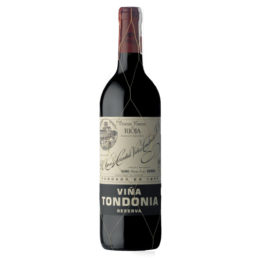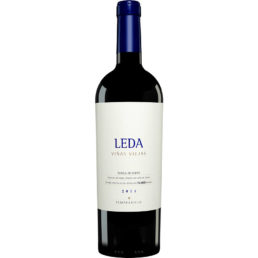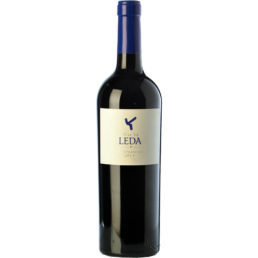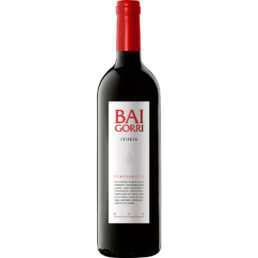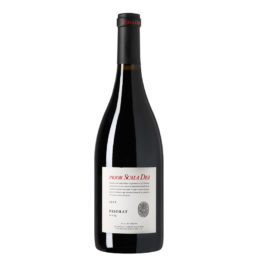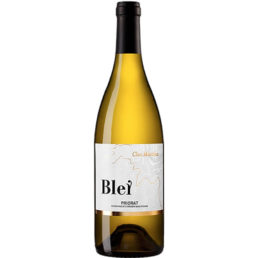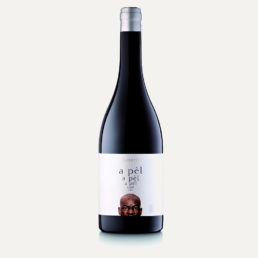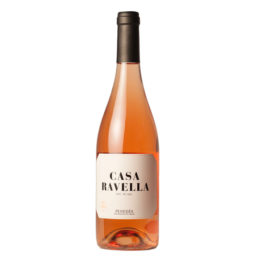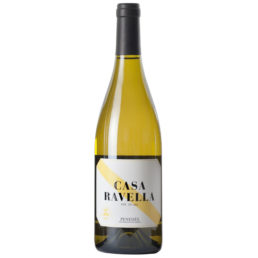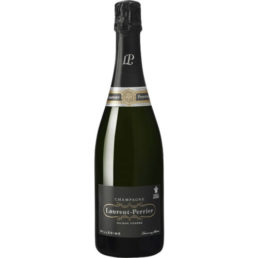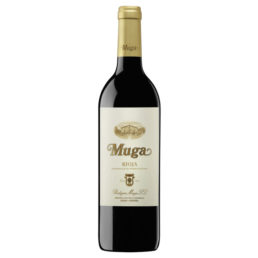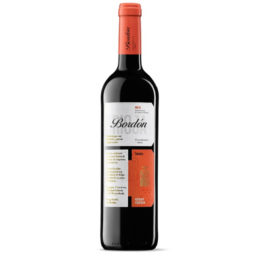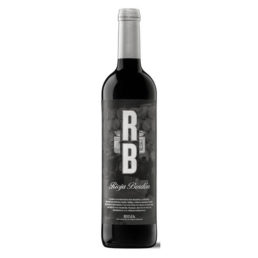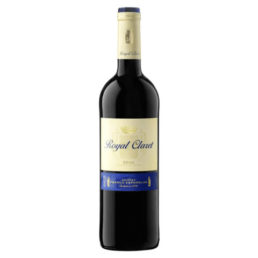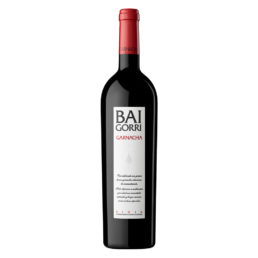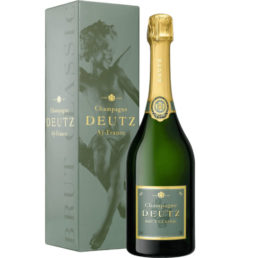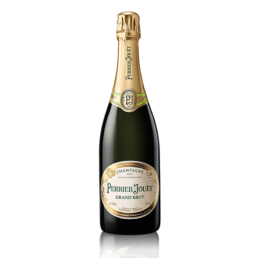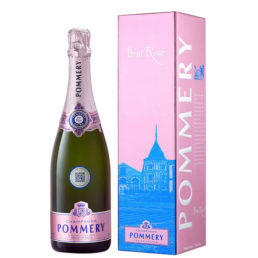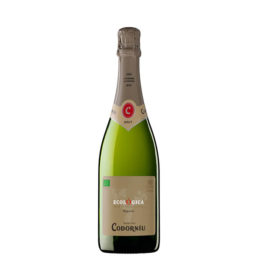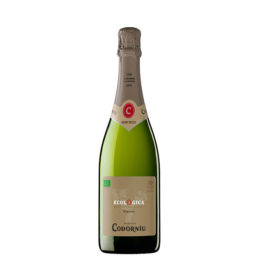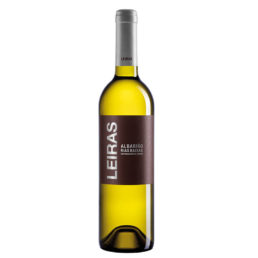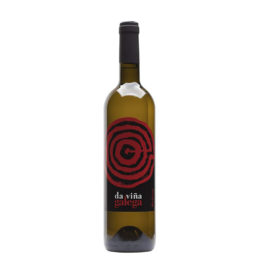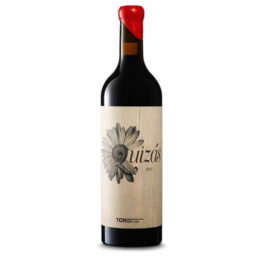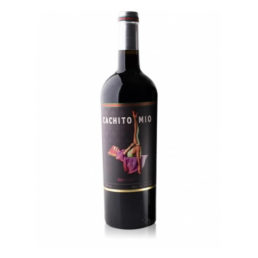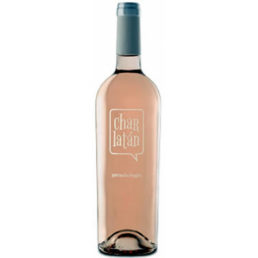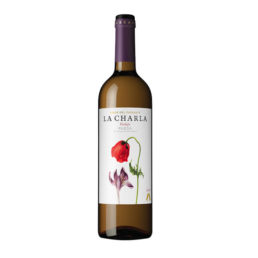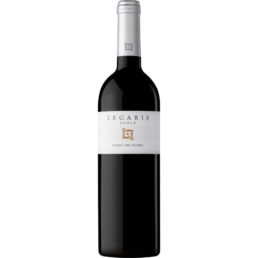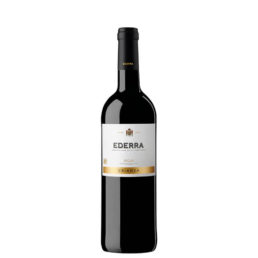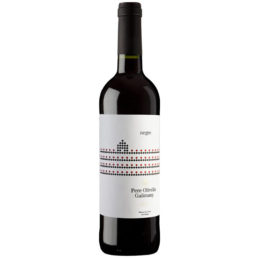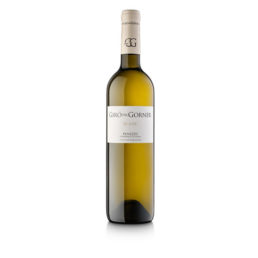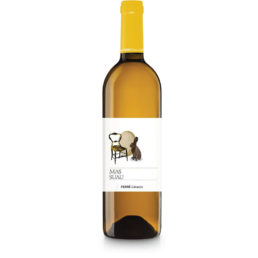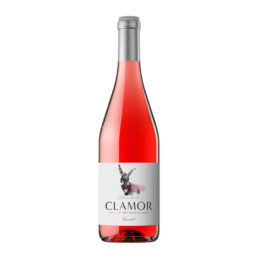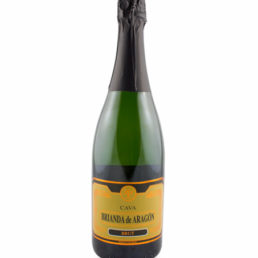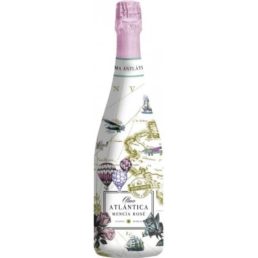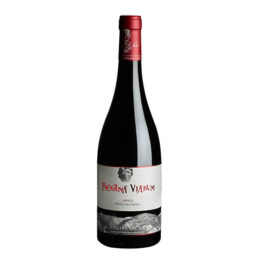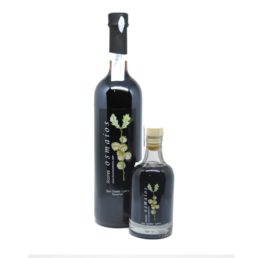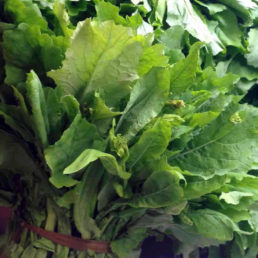white meat
- You cannot add "Vino rosado- Casa Ravella Rosado (ecological)" to the cart because the product is out of stock.
Showing all 41 results
-
Viña Tondonia Reserva Red 2008
Characteristics of the harvest: Year rated as EXCELLENT by the Rioja Regulatory Council. The absence of frost in spring and the good environmental conditions that were conducive to the fertilization and the ripening of the grapes and offset the harmful effects of pests that attack the buds at the time of bud break and bud burst–, made to produce an abundant harvest. Despite suffering a summer unstable and stormy, this large quantity of harvest achieved high levels of quality thanks to the optimal climatic conditions of a month of October, bright and fresh, that enabled us to carry out the work of vintage and convenient way to staggered, encubando each of the varieties in their point of seasoning, mature and balanced without putting in danger at any time, the perfect sanitary state of the grapes. The work of grape harvest began on the Viña tondonia estate of the day 11 October. Aging in oak barrels: 6 years old, subject to 2 rackings per year. Clarified with whites of fresh eggs. Limited production: 35.000 bottles. Pairing: cooked fish, fried or grilled, spicy. Seafood cooked a la plancha. White meats with sauces consistent. -
Red wine Bodegas Leda – Leda Viñas Viejas Magnum
Leda Viñas Viejas it is the wine which embodies the principles of Bodegas Leda. A red wine multiterroir made from grapes from Tempranillo vines 70 and 100 years old, with low yields between 2.000 and 2.500 Kg/Ha, from two of the most emblematic areas of Castile and León: Ribera del Duero and Toro.
Leda Viñas Viejas is the flagship of the winery, with a production that varies depending on the quality of the vintage, between 2.000 and 12.000 bottles.
100% Tempranillo. Leda Viñas Viejas is a wine of guard powerful racial and, with an ageing long 18 to 24 months, depending on the vintage.
PairingMeats white or red, casseroles, soups and stews. -
Red wine Bodegas Leda – Mas by Leda Magnum 2016
Most of Leda it is the result of the integration of different payments Tempranillo, from vineyards of more 40 years old, with yields between 4.00 and 4.500 Kg/Ha.
It is a wine Multiterroir, elegant and easy to drink, that seeks to capture the essence of the area from which it comes, mostly Bull, Cigales, Valtiendas and Tudela de Duero.
It seeks to express the versatility of the tempranillo variety in the different regions around the Douro river, looking for create a wine authentic and with personality.
From selected vineyards in which it intervenes minimally, Most of Leda 2013 transmitted to the perfection that was this add, with mild temperatures and even fresh during the spring and summer, something unusual in the area. A vintage atypical that gives rise to a wine atypical, it displays fine, fresh, with great aging potential and an essence genuinely atlantic.WinemakingAfter the collection of the grape begins the process of draining, pressing and fermentation. The grape juice is macerated with the skin and seeds in large metal vats.Aging14 months in oak barrels, 90% French (Allier, Nevers and Joupillers) and 10% American.Pairing
Barbecues, tapas fusion, white meats with sauces complex. -
Red wine Bodegas Baigorri – Baigorri Crianza Magnum 3L
Red wine elaborated with grapes of the variety Tempranillo, Grenache and other small proportions of other indigenous grapes. All have been hand-selected, using selection tables for vibration and weight. Long macerations and fermentations intercellular deposits special. 14 months aging in barrels of French and american oak. Pairing It is a wine ideal for any type of cooked, seasonal vegetables, white meat and hunting light, rice and tapas in general. -
Red wine Bodegas Baigorri – Baigorri Crianza Magnum
Red wine elaborated with grapes of the variety Tempranillo, Grenache and other small proportions of other indigenous grapes. All have been hand-selected, using selection tables for vibration and weight. Long macerations and fermentations intercellular deposits special. 14 months aging in barrels of French and american oak. Pairing It is a wine ideal for any type of cooked, seasonal vegetables, white meat and hunting light, rice and tapas in general. -
Scala Dei Prior Magnum tinted wine
Scala Dei Prior is a wine with personality, that breathes tradition and authenticity, since that allows to know better the richness of the D. O. Q. Priorat. It is elaborated with grapes from different small plots, carefully selected. This care durantand all the processing result to a Crianza wine is well structured and full of aromas that will transport you to the vineyards of the Priorat.DEVELOPMENT (VINIFICATION)After defining the vineyards that are going to go for this wine, the grapes previously selected in the estates arrive at the winery in small boxes 16 kg, where all the grapes is reviewed thoroughly by the warehouse staff as they pass through the selection table, vibratory installed at the entrance of the winery. After de-stemming and crushing, fermented at controlled temperature to preserve the aromas of ripe fruit. Later, the breeding takes place in barrels (French oak 80% and american 20%) during a year. This type of ageing is completed in bottle for more than a year for the wine to reach the market in optimal time of consumption.VINEYARD (VITICULTURE)Grapes from varieties of historical of the area and of the vineyards older (between 35 and 60 years old), planted on the terraces and in the typical “costers” licorella from Priorat. The terrain, the driving of the plants and above all, the desire to obtain the best grapes, makes the grape harvest is done manually only. The vineyards are situated between the 500 and the 800 meters of altitude, which favours the maturation is slow and regular and enables a variety of shades to combine heights and different orientations of the vineyards. All this makes this wine unique.AWARDS94 POINTS GUÍA GOURMETS 201890 POINTS GUIDE PEÑÍN 2018GOLD MEDAL MUNDUS VINI - 201890 POINTS ROBERT PARKER 2018GOLD MEDAL EXPOVINA - 2017SILVER MEDAL BACCHUS - 2017 -
White wine Mas d'en Blei – Clos Martina Magnum
PRODUCTION 4.000 bottles.VITICULTURE Grapes are produced only of the finca Mas d'en Blei. Vineyards on terraces of slate (licorella). Vintage hand. Selection in table. Development separated by varieties.VINIFICATION Pre-maceration in cold during 24 hours. Pressing to racking to a tub where it is kept other 24h. Fermentation in new French oak barrels (Q. Petrea) of 300 liters, fine grain and medium toast light. Parenting 6 months with lees and "battonage" journal. Stabilization in cold, the natural way (seasonal), not induced. Bottled: 1 year in the bottle.
AWARDS GOLD medal INTERNATIONAL WINE CHALLENGE 2016. -
Red wine – To Pèl of Loxarel (ecological)
Elaboration
Viticulture, organic and biodynamics. Three months in barrels of 500 liters and three months in amphorae of clay 720 litre capacity. In order to find the expression of the varieties, intensity, territory and authenticity. Vineyards of Garnacha of height more than 500m above sea level, and Merlot, finca Can Mayol, to a 250m altitude. Natural wines are made with great work in the vineyard and minimal intervention in the winery.Pairing
Red meats and white with no sauces strong. All types of birds, especially partridge. Rice mountain. -
Rosé wine- Casa Ravella Rosado (ecological)
SOURCE Alt Penedès. Penedès denomination of Origin. Own vineyards of our farm House Ravella ('ordal). DEVELOPMENT Only crops own. Manual harvest with selection of the grapes in own vineyard. De-stemming, total. After a short maceration, fermented in stainless steel tanks with temperature control. -
White Wine Crianza White House Ravella (ecological)
SOURCE Alt Penedès. Penedès denomination of Origin. Own vineyards of our farm House Ravella ('ordal). VINIFICATION AND AGEING Only own harvest. Manual harvest with selection of the grapes in own vineyard. After you get the “flower must” proceed to ferment in oak barrels, where later will be a minimum of six months on its own lees. -
Champagne Laurent Perrier – Brut Millésimé 2006
Laurent-Perrier has chosen to make crops very rarely, only by choosing the best years. This makes the Brut Millésimé it is an exceptional wine and exceptional that clearly express the specific character of a year in the style of Laurent-Perrier. Therefore, Laurent-Perrier Brut Millésimé 2006, champagne is a remarkable and exceptional.Mix and wine making Varietal grape: Chardonnay 50% Pinot Noir 50%Elaborado exclusivamente con uvas Chardonnay de la Côte des Blancs y uvas Pinot Noir de la Montagne de Reims Crus: Pinot Noir from the Montagne de Reims: Verzy, Verzenay, Mailly, Louvois, Bouzy is the Chardonnay of the Côte des Blancs: Chouilly, Cramant, Oger y Le Mesnil-sur-Oger. Pairing This Vintage Brut 2006 it is perfect with terrines, ham, chicken and other white meats. -
Red wine Muga – Muga Crianza Magnum 2014
The Magnum of Muga Crianza 2014 it is a wine made with the varieties Tempranillo (70%), Grenache (20%), Mazuelo and Graciano (10%). Vinification and ageing Fermentation with yeast indigenous deposits of oak. Parenting during 24 months in casks made with oak trees selected in our cooperage. Prior to bottling is carried clarification with egg white fresh. Once bottled undergo a process of fine-tuned over twelve months in our cellar, as a minimum. Pairing Magnum Muga Crianza is a wine ideal for dishes of red meat, hunting, roasted, poultry, white meat, serrano ham and sausages, cured cheeses and blue cheeses. -
Red wine Bordón Crianza
Vineyards Made with Tempranillo and Grenache vineyards from the 3 sub-zones of Rioja with different types of soils: Rioja Alta, Rioja Alavesa and Rioja Eastern slopes of the Sierra de la demanda, with north facing.Elaboration The selection of the fruit, the processing is based on the de-stemming of the bunches and soft pressing of the grapes to make the alcoholic fermentation and the malolactic fermentation. Foster The wine is aged in barrels of white oak (Ohio) medium toast and French oak for 14 months, with a racking every 4 months to facilitate the natural clarification. Subsequently it remains 6 months in bottle for refinement. Pairing Legumes, white meats and grilled, sheep cheese, pastas and fried foods in general -
Red wine Bodegas Baigorri – Baigorri Crianza
Red wine elaborated with grapes of the variety Tempranillo, Grenache and other small proportions of other indigenous grapes. All have been hand-selected, using selection tables for vibration and weight. Long macerations and fermentations intercellular deposits special. 14 months aging in barrels of French and american oak. Pairing It is a wine ideal for any type of cooked, seasonal vegetables, white meat and hunting light, rice and tapas in general. -
Red wine RB Rioja Bordon Selection
VineyardsMade with Tempranillo from vineyards from the 3 sub-zones of Rioja with different types of soils: Rioja Alta, Rioja Alavesa and Rioja Eastern slopes of the Sierra de la demanda with north orientation.Elaboration
The grape previously destemmed, fermented in contact with the skins at an average temperature of 22 ºC. On completion of the fermentation, the wine remains in contact with the skins (grape skins) during 7 days. The de-acidification maloláctia occurs in barrels of new american oak medium toast. Foster The wine is raised in barrels of new american oak medium toast for 12 months with interruptions every 4 months to perform the decanted. Subsequently the wine is already stabilized continued their evolution in bottle. Pairing Vegetables substantial, white meat stuffed, beef, lamb, pig, veal, sheep's milk cheeses and pasta made. -
Red wine – Royal Claret
DEVELOPMENT
Performed the alcoholic fermentation and concluded, the deacidification malolactic fermentation the wine goes to the barrels of white oak (Ohio) medium toast. The aging of wine is interrupted every six months to make the traditional racking barrel to barrel. Raised in american oak barrels during 5 months.PAIRING
The Wine Royal Claret is perfect to accompany, rice, post, vegetables, vegetables, white meats or in sauce, red meat, semi-mature cheeses.AWARDS
- Recommended, International Wine Challenge, United Kingdom
- Excellent quality/price, Wine & Spirits, United Kingdom
- 83 points, Guía Peñin, Spain
- Recommended, Decanter World Wine Awards 2009, United Kingdom
- Recommended, Philipson & Soderberg , Sweden
- 87 points, Wine Spectator, USA
-
Red wine Bodegas Baigorri – Baigorri Garnacha
Red wine made from vineyards very old low production. Grapes of the Garnacha variety hand-selected, grain by grain, using selection tables and vibration. The grapes are without compressing marinated in special tanks with temperature control and long fermentations intercellular. The nursery phase lasts 14 months in new barrels of French oak. Pairing White meat, birds and spices. Seafood and fish cooked (hake, cod...). Cheese, in particular, goat and blue. -
Champagne Deutz – Deutz Big Brut Classic
The most classic of the Deutz cuvées is far from mundane. The three varieties are blended in equal and unchanging proportions (34% Chardonnay, 33% Pinot Noir and 33% Pinot Meunier) ensure that show their perfect harmony. Pairing Appetizers, white meat, poultry, salmon, fish in the oven, fish blue and white. -
Champagne Perrier Jouët Grand Brut Magnum
GRAND BRUT The heir apparent to the style of Perrier-Jouët. "The cuvée Perrier Jouët Grand Brut is the perfect introduction to the style of the Maison." Hervé Deschamps , chef de caves. Assembly of fifty Crus different, Perrier-Jouët Grand Brut it is a true reflection of the quality and diversity of the wine tradition of the Maison. This assemblage is the balance between consistency of style Perrier-Jouët and the effects of the climatology of the year. With the addition of between a 12 and 20% of reserve wines, the cuvée Perrier-Jouët Grand Brut is dominated by elegance and finesse of Chardonnay (20%) from the best vineyards of the Côte des Blancs. The delicacy of its structure comes from the Pinot Noir (40%) harvested mainly in the Montagne de Reims and Vallée de la Marne, although also in the best Crus of the region Aube, as Les Riceys. The Pinot Meunier (40%) the Vallée de la Marne brings harmony, a fruity character and roundness to the wine. Pairing Perrier-Jouët Grand combines perfectly with dishes like carpaccio of fish or white meat Brut. Its cheerful liveliness is complemented perfectly with the crisp vegetables and the tofu. Medals Gold medal in the category of Champagne Brut – GILBERT ET GAILLARD, 2016 -
Viña Gravonia Crianza 2012
Characteristics of the harvest: Year officially qualified as VERY GOOD. Year that goes by without incidents of weather severe, in the absence of spring frosts, but marked by abundant spring rainfall and post-harvest, however a summer of benign and drier favored the ripening and health of the grapes which resulted in the obtaining of a harvest it is not very abundant but of similar quality to that of the previous year. The weather was exceptionally favourable during the whole of the final phase of the vegetative cycle, something that is always decisive for the quality of the harvest. Our vineyards enjoyed optimal conditions for the health status of the fruit was virtually perfect, and the maturity to evolve with parameters, balanced color, acidity, alcoholic strength, etc., what that has allowed us to obtain a harvest of high quality and something lower on your final volume to the previous. The work of collection of the grapes began on the day 6 October in “Viña Gravonia” with the white grape varieties, the day 9 October in “Viña tondonia estate” with the varieties and finalized the 30 October after harvest “Viña Cubillas” and “Viña Bosconia”. Aging in barrel: 4 years old, subject to 2 rackings per year. Clarified with whites of fresh eggs. Limited production: 13.000 bottles. Pairing: cooked fish, fried or grilled, spicy. Seafood cooked a la plancha. White meats with sauces consistent. Combines well with pasta. -
Champagne Pommery Brut Royal Rosé
Pommery Brut Royal Rosand follows the style Pommery was developed by Thierry Gasco. Finely fruity, this champagne rosé is distinguished by a note more fleshy, the time that remains live, fresh and very subtle. DEVELOPMENT (VINIFICATION) Rosé from a blend of Pinot Noir and Bouzy Grand Cru. The color comes from Pinot Noir grapes slightly to wine in their old bottles, specially chosen in the vineyards for their maturity. This champagne rests in cellar for three years to develop the distinctive properties of Pommery Brut Royal Rosé.PAIRINGUnusual pleasure at the appetizer, Pommery Brut Royal Rosé is perfect with white meats and crustaceans, as well as accompanying desserts with red fruits. -
Cava Codorníu – Codorníu Ecológica Brut
Codorníu Ecológica Brut, the authentic expression of the cava traditional. Elaborated with autochthonous varieties naturally grown, of the best organic vineyards in the Penedès. To prevent any contact of the grapes and musts environmental rest of our production we decided to pick these grapes on different days of the rest of our vintage. Vinified with the utmost care in a reserved area of our historic winery. Both oenological products used throughout the development process as the various stages carried out to guarantee the denomination of organic cava. DEVELOPMENT (VINIFICATION) To prevent any contact of the grapes and musts ecological with the rest of our production we decided to pick these grapes on different days of the rest of our vintage. The material used in the winery is separated from the rest and are labeled in a special way the fermentation tanks. Both oenological products used throughout the development process as the various stages carried out ensure the designation of ecological.VINEYARD (VITICULTURE)All the vineyards from which is born Codorníu Ecológica Brut have ECO certification (European Regulations) and NOP (National Organic Program, USA) and are located in the Alt Penedès (Parellada and Macabeo) and in the Central Penedès (Xarel lo). The low yields per hectare, guarantees the maximum quality of the grape (8.500-9.000 Kg/ha, the maximum allowed is 12.000 kg/ha).PAIRINGCodorníu Ecológica is a cava ideal to highlight the natural flavors of healthy cuisine and a little spicy (stir-fry wok, papillotes, roasted vegetable, fish grilled or steamed and white meats). -
Cava Codorníu – Codorníu Ecológica Is Semi-Dry
Codorníu Ecológica Is Semi-Dry it is elaborated with autochthonous varieties naturally grown , of the best organic vineyards in the D. O. Cava in the Penedés. To prevent any contact of the grapes and musts ecological with the rest of our piu decided to pick these grapes on different days of the rest of our vintage. Vinified with the utmost care in a reserved area of our historic winery. Both oenological products used throughout the development process as the various stages carried out to guarantee the denomination of organic cava semiseco. DEVELOPMENT (VINIFICATION) To prevent any contact of the grapes and musts ecological with the rest of our production we decided to pick these grapes on different days of the rest of our vintage. The material used in the winery is separated from the rest and are labeled in a special way the fermentation tanks. Both oenological products used throughout the development process as the various stages carried out ensure the designation of ecological Codorníu Ecológica is semi-dry.VINEYARD (VITICULTURE)All of the vineyards of the D. Or. Cava of the born Codorníu Ecológica have ECO certification (European Regulations) and NOP (National Organic Program, USA) and are located in the Alto Penedés (Parellada and Macabeo) and in the Central Penedès (Xarel lo). The low yields per hectare, guarantees the maximum quality of the grape (8.500-9.000 Kg/ha, the maximum allowed is 12.000 kg/ha).PAIRINGCodorníu Ecológica semi dry is a cava ideal to highlight the natural flavors of healthy cuisine and a little spicy (stir-fry wok, papillotes, roasted vegetable, fish grilled or steamed and white meats). -
Albariño white wine Leiras
In this white, produced in the Rias Baixas, to the Codorníu Group, you will find freshness, minerality and elegance, three qualities that define the wines in the subregion of Val do Salnés, from where come some of the best Albariños of the D. Or. Piles (farms in galician) it is a single variety of grape Albariño (100%). This wine pairs perfectly with fish, seafood, snacks, rice or pasta. Its structure allows also to accompany white meats or sausages. -
Galician white wine Albariño Daviña
Young white wine cellar Adegas Valdes fresh with fruity and citrus. -
Red wine Casa Maguila – Perhaps
The Casa Maguila It has the habit of baptizing their wines with names boleros. This is particularly inspired by the famous song by Cuban artist Osvaldo Farrés "Perhaps, maybe, maybe". We have a wine balsamic on the nose and mouth, with aromas of ripe fruit and a balanced taste, tasty and long.WinemakingMechanical destemming and grape selection on vibrating belt. It encuba dry ice lowering the temperature to 6 ° C and allowed to start fermentation spontaneously. Malolactic fermentation in barrel.AgingParenting 20 months in French oak barrels, of which 80% They were new and the rest used.Limited productionPairing1.812 bottlesWhite meat, red meat, traditional cuisine and Mediterranean cuisine. -
Red wine Casa Maguila – Cachito Mío
Cachito mío is the name of a well-known bolero, is presented to the public with a striking and bold exterior presentation, it has been conceived as a wine of bold spirit and innovative within the D. O. Toro. Faithful representative of the character of your wine cellar, it is striking for its style, that expresses all the power and fruit of the grape Tinta de Toro, at the same time that it is very pleasant to drink, with an easy and at the same time complex step of mouth. . Elaboration Selection of bunches in the vineyard and in the winery, from old vineyards. Kernels of the harvest, with total elimination of scratches and other foreign elements. Vatting and fermentation with whole grains at a controlled temperature, finishing off with your drained and pressed at low pressure. Moderate stabilization and bottling. -
Rosé wine Caesar Prince – Charlatan
The words flow with agility, there is a great struggle for intervening in the conversation, there is a huge desire of communication... it is the time of "charlatan". A wine dedicated to the lovers of the talk, to the big talkers, as we are... let us know what you know well! Charlatan it is the latest innovation from the winery, a rosé wine that is far from the classics that are made in the Denomination of Origin Cigales. It is made with the grape Garnacha Tinta but his direct pressing and fermentation at low temperature favors a pink color, very pale, without losing the aromas of fruit and flowers typical of the variety. A pink with a soul of white. ‘Charlatan’ is a wine modern, relaxed and without complexes, eye-catching and festive. A pink to make you cool in any occasion. -
Red wine Bodegas Leda – Leda Viñas Viejas
Leda Viñas Viejas it is the wine which embodies the principles of Bodegas Leda. A red wine multiterroir made from grapes from Tempranillo vines 70 and 100 years old, with low yields between 2.000 and 2.500 Kg/Ha, from two of the most emblematic areas of Castile and León: Ribera del Duero and Toro.
Leda Viñas Viejas is the flagship of the winery, with a production that varies depending on the quality of the vintage, between 2.000 and 12.000 bottles.
100% Tempranillo. Leda Viñas Viejas is a wine of guard powerful racial and, with an ageing long 18 to 24 months, depending on the vintage.
PairingMeats white or red, casseroles, soups and stews. -
Red wine Bodegas Leda – Mas de Leda
Most of Leda it is the result of the integration of different payments Tempranillo, from vineyards of more 40 years old, with yields between 4.00 and 4.500 Kg/Ha.
It is a wine Multiterroir, elegant and easy to drink, that seeks to capture the essence of the area from which it comes, mostly Bull, Cigales, Valtiendas and Tudela de Duero.
-
White wine Codorniu (Wines of the Passer) – The Talk
Poppies in the wind seem to be rotated towards the lilies, commenting on the generous spring in the highlands of Wheel. On the stony ground lies a sea of vineyards of Verdejo. Smooth, golden, its grapes provide the harmony of the aroma of fruit madura, and light notes of fresh green aniseed in the white Wines of the Passer - The Talk.DEVELOPMENT (VINIFICATION)The grape harvest, with all the care in order not to lose its fragrance. We separate the stems from the grapes and maceramos a few hours the berries to release the evocative aromas contained in the skin of grapes, and pick them up in the wort. The must is fermented at a low temperature (14 ºC) slowly revealing the aromatic expression of this variety.VINEYARD (VITICULTURE)Vine in glass on floors brown, stony are the traditional landscape in the area of Wheel; in good relations with new trellised vineyards, showing a balance of tradition and modernity.PAIRING
Wines of the Passer - The Talk is a white wine that harmonizes perfectly with creams, salads, sautéed vegetables, incoming, seafood, smoked, white meat, legumes and pasta or rice dishes. -
Red wine Legaris Roble
Legaris Roble it is a wine 100% Tinto Fino that seeks out the maximum fruit expression of the variety. A wine designed to offer a great intensity of varietal.DEVELOPMENT (VINIFICATION)Vintage 2016 was carried out between the days 4 and 27 October. The grapes are despalilló and moved virtually the entire deposits. After a cold pre-fermentation maceration of 48 hours, performed the alcoholic fermentation to 24 ºC in order to preserve the varietal aromas. The total duration of the maceration was 8-10 days. Then the wine was spontaneously the malolactic fermentation takes place in stainless steel tanks. Once, the wine went into american oak barrels, where he spent a total of 3 months. Subsequently a slight clarification and a final filtration to refine the wine before bottling.VINEYARD (VITICULTURE)Selected grapes coming from the estates of Legaris and suppliers controlled. Soils: alluvial, cascajosos, franco-sandy; and meanders around the River Duero. Viticulture: planting North-South. Selected Clones free of virus. Pruning cuts. Passes of green pruning to clear, pruning in the face of this (morning sun) of the rows, and thinning of clusters. Irrigation: due to the low rainfall of the area, to the poverty of the soils and the presence of a plant cover, it is vital to the irrigation. We use techniques of deficit irrigation controlled by applying water stress. Integrated Control of Pests: do not use insecticides or antibotrytis. Low pressure for mildew and control of oidium mainly with organic products. Vintage: to decide the optimal time of harvest, apart from the monitoring of ripening analytical, it also makes the tasting of the grapes to evaluate the maturity of the phenolic of these. It performs selective harvesting, harvesting the grapes and making the different terroirs separately. After a winter in which the vine has been sitting in conditions sweet and with a precipitation rate lower than usual, the spring with abundant rainfall and low temperatures delayed the outbreak of the vine more than usual. The summer characterised by high temperatures, with no rain, it has been some blockage in the plants as a result of the need of the plants close their stomata to prevent excessive dehydration which has resulted in a defendant's retardation in the time of ripening, especially in young plants and in those located on land more arid.PAIRINGLegaris Roble is ideal to accompany white meats, folders,salads, tapas and fresh cheeses -
Red wine Bodegas Bilbaínas Ederra Reserva
Ederra Reserva it is the expression of the characteristic fresh and fruity red wine Tempranillo, with notes of toast and spice from the barrel aging.DEVELOPMENT (VINIFICATION)Ederra reserva search for the expression of the traditional Reservations of Rioja. Expression of fruit and complexity thanks to a good upbringing in wood and bottle. After de-stemming and crushing, takes place a fermentation classic, to 28 ºC, with 2 weeks of maceration. The wine passes 18 months in american oak barrels, where you complete the character fresh and fruity wine with notes of toast and spice of the barrel, the tannins are polished and the wine is rounded. After bottling remains in the bottle for at least two years to get ready for your consumption.VINEYARD (VITICULTURE)From vineyards located in the Rioja Alta, area marked by the atlantic influence. The soils are predominantly chalky clay, with low fertility. The climate and the soil, states the characteristics of the Tempranillo are going to allow red wines fresh, with good fruit expression and a capacity for aging optimal to obtain Reserve wines.PAIRINGRed meats and game dishes, roasted, poultry, white meat, serrano ham, charcuterie, cheeses, blue cheeses combine perfectly with Ederra Reserva.AWARDS (Consult add) -
Red wine, Scala Dei Prior
Scala Dei Prior is a wine with personality, that breathes tradition and authenticity, since that allows to know better the richness of the D. O. Q. Priorat. It is elaborated with grapes from different small plots, carefully selected. This care durantand all the processing result to a Crianza wine is well structured and full of aromas that will transport you to the vineyards of the Priorat.DEVELOPMENT (VINIFICATION)After defining the vineyards that are going to go for this wine, the grapes previously selected in the estates arrive at the winery in small boxes 16 kg, where all the grapes is reviewed thoroughly by the warehouse staff as they pass through the selection table, vibratory installed at the entrance of the winery. After de-stemming and crushing, fermented at controlled temperature to preserve the aromas of ripe fruit. Later, the breeding takes place in barrels (French oak 80% and american 20%) during a year. This type of ageing is completed in bottle for more than a year for the wine to reach the market in optimal time of consumption.VINEYARD (VITICULTURE)Grapes from varieties of historical of the area and of the vineyards older (between 35 and 60 years old), planted on the terraces and in the typical “costers” licorella from Priorat. The terrain, the driving of the plants and above all, the desire to obtain the best grapes, makes the grape harvest is done manually only. The vineyards are situated between the 500 and the 800 meters of altitude, which favours the maturation is slow and regular and enables a variety of shades to combine heights and different orientations of the vineyards. All this makes this wine unique.AWARDS94 POINTS GUÍA GOURMETS 201890 POINTS GUIDE PEÑÍN 2018GOLD MEDAL MUNDUS VINI - 201890 POINTS ROBERT PARKER 2018GOLD MEDAL EXPOVINA - 2017SILVER MEDAL BACCHUS - 2017 -
White wine Mas d'en Blei – Clos Martina
PRODUCTION 4.000 bottles.VITICULTURE Grapes are produced only of the finca Mas d'en Blei. Vineyards on terraces of slate (licorella). Vintage hand. Selection in table. Development separated by varieties.VINIFICATION Pre-maceration in cold during 24 hours. Pressing to racking to a tub where it is kept other 24h. Fermentation in new French oak barrels (Q. Petrea) of 300 liters, fine grain and medium toast light. Parenting 6 months with lees and "battonage" journal. Stabilization in cold, the natural way (seasonal), not induced. Bottled: 1 year in the bottle.
AWARDS GOLD medal INTERNATIONAL WINE CHALLENGE 2016. -
Red wine Pere Olivella Galimany
The origin; vineyards of the finca's own farm Can Pere del Maset.Vinyes the Slimes, eco-friendly more 22 years located near the 450 m height. Viticulture dry, do not irrigate. Rational use and fully controlled from the copper and sulphur to try to minimize your use. We use sexual confusion to control Lobesia botrana (the european grapevine moth). Only use organic fertilizers. The harvest is performed in its optimal state of maturation phenolic, in the early morning hours, by the control of the temperature. Selection in the own vineyard, only the best grapes will be selected, harvesting by hand to ensure maximum quality of the grape. Elaboration: Processing by gravity in the winery, derrapado, crushed and subsequent vatting in stainless steel vats, where the maceration and post-fermentation alcoholic, always at a controlled temperature. There is No step by wood. Pairing: This is a wine that due to its complexity, structure and without a step-by-wood what we recommend in different combinations. Can be interesting with a few planks of cured meats (ham, loin cured, chorizo), or cheese (not overly powerful, with cow's milk, more creamy). We also recommend the typical grilled meat (white sausage and black grilled, bacon, ribs of lamb), round of beef with espigalls (or brotons). It is also an interesting display with some white meat, chicken with cherries (chicken with aromas of wild). -
White wine Giró del Gorner
The wine Blanc Penedès of Turned the Gorner is a classic Penedès. A wine that aims to recover the wines of our ancestors, developed basically with the typical varieties, the Penedès: Macabeu, Xarello and Parellada. There are No more secrets that few vineyards pampered, a few selected grapes, a gentle pressing, time and enjoy it.Elaboration:
Smooth extraction of the flower must. The fermentation has gone by very slowly, between the 15 and 18ºC.
Pairing: Perfect to accompany appetizers, salads, fish and seafood, cheeses and light white meats -
White wine Ferré i Catasús – Mas Suau
“I'm from here, this is my land, my farm, my animals, my life, I am a simple beauty, direct, I am soft, I am Mas Suau de Ferré i Catasús. ” Mas Suau is the promise of a pleasant moment, a moment of each day, whatever the occasion, to enjoy a glass of wine. Elaboration: Mechanized harvesting and night to preserve all the organoleptic qualities of the grape. Vinification of each variety separately and fermentation at a controlled temperature to 16 ° C. Pairing: It is a young wine aromatic to take in the appetizer, with any fish or seafood, and also with cheeses and white meats. -
Rosé wine Raimat Clamor
Cry is the name given to the lower part of the mountain where they grow the vines that produce this wine. Their grapes are developed pink, red and white. A privileged spot of the finca Raimat which gives rise for years, one of the best-known wines of the house.Pairing
Pair with vegetables, white meat, rice, soft cheeses and fish. Also with casual dishes such as pizza, fried and pates. -
Cava Brianda de Aragon Brut
Cava Brianda de Aragon Brut
Vinification After a first fermentation and bottling, a second alcoholic fermentation in the bottle, called retractions. Here, the base wine is mixed with yeast that help to consume the sugar and causes the fermentation. Then, the bottles are carried to the underground cellars to its period of ageing in contact with lees of the yeasts for a minimum of 15 months, making it a cava reserva. During that time occurs the removal, in the sediment of the yeast is transferred to the neck of the bottle. Later, it carries out the degüello, removing the sediment from the neck of the bottle with the minimum loss of sparkling wine. Finally, is made the corking the cava, by adding the liquor of expedition, a mixture of old wine, and other compounds that are allowed by the Appellation of Origin, what will compensate for the loss of liquid occurred in the disgorgement. -
Cava Brianda de Aragon Brut Nature Reserva
Cava Brianda de Aragon Brut Nature Reserva
Vinification After a first fermentation and bottling, a second alcoholic fermentation in the bottle, called retractions. Here, the base wine is mixed with yeast that help to consume the sugar and causes the fermentation. Then, the bottles are carried to the underground cellars to its period of ageing in contact with lees of the yeasts for a minimum of 15 months, making it a cava reserva. During that time occurs the removal, in the sediment of the yeast is transferred to the neck of the bottle. Later, it carries out the degüello, removing the sediment from the neck of the bottle with the minimum loss of sparkling wine. Finally, is made the corking the cava, by adding the liquor of expedition, a mixture of old wine, and other compounds that are allowed by the Appellation of Origin, what will compensate for the loss of liquid occurred in the disgorgement.












